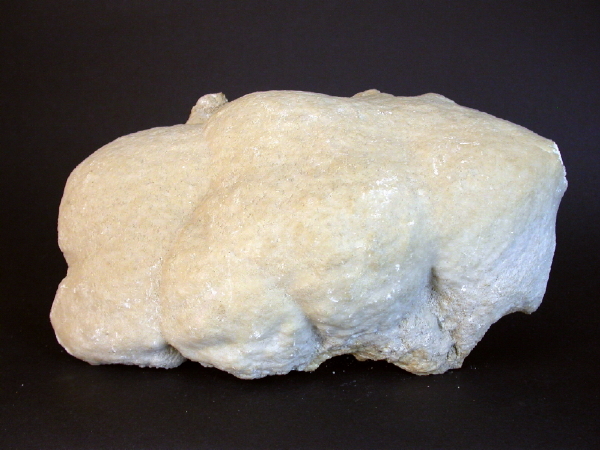The word Calcite comes from the Latin calx, (calcis = lime) due by its property to turn into lime. Calcite is a mineral chemical or biochemical (biomineralization) consisting of natural carbonate calcium and the main constituent of many sedimentary rocks. Calcite is one of the most abundant carbonates.
 Calcite example
Calcite example
Geological aspect
Limestone, composed mostly of calcite, is one of the most common sedimentary rocks and occupies large areas in all continents. It is also the most soluble: rain water that contains carbon dioxide dissolves the surface at 30 cm in two centuries. On the geological time scale is extremely fast. Thus large amounts of calcium carbonate they are constantly trained in the oceans where they are deposited as limestone, and the cycle repeats.
In calcareous regions, is not only the surface which is contested: water seeping into the depths expands the cracks it follows and creates large subsurface drainage systems. Large sets of caves and caverns discovered in many parts of the world have been formed this way.

If water containing carbonate calcium gushes mountainside, part of it forms a porous deposit called travertine or tufa and it’s composed mainly of calcite. The calcareous material, coating the objects on which the water flows, often the petrification of material of fossil remains, plants and animals. Travertine appears, most of the time, in gray friable masses or in powder, sometimes tinted by impurities in small amounts.
Once caves and canals are dug in limestone, less rainfall may cause precipitation of minerals, meaning: the formation of deposits rather than the continuation of the dissolution; small amounts of water only fall dropwise from cavities of the roof and then evaporation causes the formation of icicles hanging from the ceiling and stalagmites rising from the ground. When they meet they form a column. These concretions can take on the appearance of draperies, swags, or other unusual shapes. Infiltration of water on the floor of a cave can form a stratified deposit, translucent, resembling a frozen waterfall.
You are in front of the Baravon stream that originates in the town of Gras. The waters of Baravon charged with calcite petrify all that is in her bed. After his 5 km path, this small stream dried up in summer period, like its confluence, mingles its waters with those of the Ibie river in the municipality of lagorce.
At the indicated coordinates, you can't find an infoboard, to validate your log, please send me the answers to the following questions. You can log without waiting for my reply, if a problem occurs we will try to find a solution together.
Log this cache as a "found it" and send me your answers via my profile or via message on geocaching.com, and I will contact you in case of problem.
1-. From where comes the calcite of the Baravon and why?
2-. Find an element in the river petrified by calcite, how calcite actuates here?
3-. What is the texture of the calcite transported by Baravon?